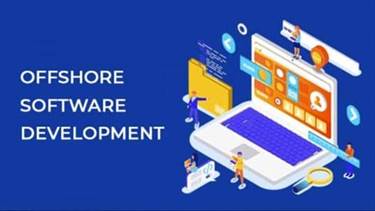Prototypes allow early system component testing and visualization in Rapid Application Development (RAD). This aids in recognizing any issues, confirming design decisions, and guaranteeing that the finished product lives up to shopper expectations. Multiple groups work on developing the software system utilizing the RAD model parallelly. “The beauty of Kissflow is how quick and straightforward it is to create the apps I want. It’s so user-friendly that I made exactly what I needed in half-hour.” When you companion with DistantJob on your next hire, you get the best quality developers who will ship professional work on time.

Additionally, it offers a plethora of elements to integrate into the applying. To align RAD with strategic goals, contain stakeholders from the outset to outline clear goals. Ensure common communication among cross-functional groups to keep up alignment with business targets. Developing software rapidly is especially helpful for companies that require software program quickly but wish to have much enter within the growth course of. Upon approval, developers add some ending touches such as testing, conversion, interface, and person coaching. A product is prepared for delivery once it has been correctly assessed for components like stability and longevity.
Comparisons In Software Improvement
In the dynamic process of RAD, particularly in the course of the prototyping and building stages, builders frequently have to experiment with varied features rapidly. Understanding methods to delete a git stash can be extremely helpful for managing interim improvement variations with out cluttering the repository with unnecessary snapshots. Rather than sticking to a inflexible set of requirements, builders create prototypes with various options and features as quickly as they’ll.

Before adopting the RAD mannequin, it’s essential to understand its advantages and downsides. As an example, growth teams can work at totally different speeds when working together. Rapid utility growth may take longer than anticipated as a end result of system integration can happen when both groups complete their work. The concept of Rapid Application Development (RAD) was conceived in the Nineteen Eighties, so it isn’t a revolutionary idea. This is a continuous evolution of development philosophies in accordance with the requirements at the time.
Software Program Development Life Cycle
RAD methodology entails 4 phases of software growth while attaining a quick turnaround time (TAT). Choosing the fast utility development strategy is feasible when you reply all questions positively. The RAD strategy differs from conventional methodology by adhering to a strict deadline. In order for the project to proceed efficiently, all stakeholders should be on board with the timeline. Once the project is scoped out, it’s time to leap proper into improvement and build out the consumer design through numerous prototype iterations.

Instead of having to access or modify the source code, no-code growth offers more instruments for organizing data. Furthermore, rapid software growth emphasizes performance over person interfaces and consumer experiences. While agile focuses on the design of a project, it considers it a vital a half of it.
To accommodate any alterations and ideas, you have to stay involved with the shopper throughout this course of. With a shorter planning part and a focus on extremely iterative design and construction, RAD teams are able to accomplish more in less time with out sacrificing client satisfaction. Traditional improvement methodologies, like the waterfall approach, don’t minimize it any longer. Throughout the development cycle, RAD promotes finish customers and stakeholders’ lively participation. Collaboration and frequent suggestions make it possible to ensure that the altering system satisfies each person and corporate needs. As famous many occasions so far, RAD methodology requires frequent suggestions from clients and end-users.
To understand this concept, let’s consider the development of a cell banking app using RAD. Furthermore, every iteration focuses on adding new performance and enhancements to contribute to the overall software program product. This website provides tutorials with examples, code snippets, and sensible insights, making it suitable for both beginners and skilled builders. This requires group members with excellent domain information, which may not at all times be available, particularly in smaller businesses which may be reliant on exterior consultants.
Phase 1: Necessities Planning
The merchandise on this class assist groups craft interactive designs at spectacular speeds. And some instruments on this record, like Webflow, allow designers to export the completed design as a useful cross-browser prototype. However, if your team is tasked with building mission-critical software (flight controls, implant firmware, etc.), the RAD methodology just isn’t solely inappropriate but also irresponsible. A pilot with a failing control module or a coronary heart assault survivor with a malfunctioning pacemaker can’t supply feedback in your prototype from past the grave.
- It emphasizes quick check cycles, environment friendly resource allocation, and flexible adaptation to altering necessities.
- Platforms like App Builder really fit this explicit type of app development process because they contribute to flexibility and speed up product cycles by using low code functionalities.
- Furthermore, rapid utility improvement emphasizes functionality over consumer interfaces and user experiences.
- It provides builders with numerous instruments and the pliability to utilize multiple third-party instruments, helping in rapid growth.
- The RAD model was launched as an alternative resolution to the normal waterfall software development life cycle (SDLC) model.
With speedy utility growth, builders can quickly make multiple iterations and updates to the software with out starting from scratch. This helps make sure that the final outcome is more quality-focused and aligns with the end users’ requirements. RAD is an agile software growth approach emphasizing quick prototyping and iterative improvement.
Agile growth is a set of practices and strategies based mostly on iterative development, the place solutions and necessities are refined by collaborating between teams. Among its practices are stand-ups, test-driven growth, pair programming, and sprints, in addition to frameworks like Scrum and Extreme Programming. For steady iteration and faster software supply, explore rapid software development. The software program development team of programmers, coders, testers, and builders work together throughout this stage to verify every thing works smoothly and that the top result satisfies the client’s expectations and objectives. Combined with the price of software improvement, it comes as no shock why the RAD methodology is so popular. For me, working on small or medium-sized tasks requires out-of-the-box, one-click processes that can save adequate % of the time to get it began.
Sustainable Software Development: 9 Eco-friendly Coding Practices
In designing their respective improvement fashions, Boehm and Martin took advantage of the software’s inherent pliability. RAD could also be a method to streamline and enhance software improvement operations, but it is, actually, a technique. That’s why I’ve picked several platforms that can simplify sure digital product design and growth processes.
In trendy Information Technology environments, many systems are actually constructed using some degree of Rapid Application Development[7] (not necessarily the James Martin approach). In addition to Martin’s method, agile methods and the Rational Unified Process are sometimes used for RAD development. The aim of RWAD is to minimize back the time and cost of developing web functions while still producing high-quality, useful software program.

By utilizing it, you won’t have to rework from the beginning whenever you have to introduce a model new function or in case your shopper rejects an update/version. With over 8 years of experience in the MERN stack, I specialize in building strong and scalable net applications. Proficient in MongoDB, Express.js, React.js, and Node.js, my passion for clear code and innovative problem-solving ensures high-quality solutions. It is a low-code platform that permits rapid software program growth by providing automation capabilities and seamlessly integrates with third-party services. It provides developers with numerous tools and the flexibleness to make the most of a quantity of third-party instruments, helping in speedy growth.
Rapid utility improvement was a response to plan-driven waterfall processes, developed in the 1970s and Nineteen Eighties, such as the Structured Systems Analysis and Design Method (SSADM). One of the issues with these methods is that they were based mostly on a conventional engineering mannequin used to design and build things like bridges and buildings. At the very beginning rad rapid application development, fast utility growth units itself other than traditional software program development models. It doesn’t require you to sit down with finish customers and get a detailed listing of specs; as an alternative, it asks for a broad requirement.

I don’t count on an answer that may “do it all and forget” however quite lay out the foundations of an app. It simply works nice with different tools like Indigo.Design as nicely, converting Sketch to code and Figma information to full-featured apps and forming a complete design-to-code answer. The RAD mannequin is a kind of incremental process mannequin in which there’s a particularly short improvement cycle. When the requirements are fully understood and the component-based construction method is adopted then the RAD model is used.
The History Of Fast Application Improvement
In an era when CIOs relentlessly drive innovation, and enterprise technology companions advocate for transformative IT initiatives; RAD serves as a powerful ally in the quest for faster, extra efficient software development. As we step into 2024, the dynamic landscape of software program engineering has evolved, and RAD is poised to play a pivotal position. Traditional methodologies similar to Waterfall make sure that you persist with a inflexible construction and only allow you to proceed to the subsequent improvement section after completing the previous one. Rapid Application Development (RAD) makes your workflow extra collaborative and faster. What distinguishes this approach from different improvement methodologies is its emphasis on gathering necessities individually somewhat than making an attempt to detect general features collectively. The key good thing about this growth model is you could reiterate the process, continuously make adjustments, and add new functionalities with out starting from scratch.

Prototyping reduces the danger of bewilderment necessities and guides the development process effectively. Rapid Application Development (or the RAD model), in essence, is an agile project growth strategy that gives a brilliant versatile and adaptable course of to how you design and construct software program solutions. It replaces the drawn-out, plan-focused approaches combined with strict design specs and as an alternative prioritizes fast prototyping and suggestions. It molded itself to fit the necessities of the time whereas retaining some core development tips.
Suco was looking for a one-stop solution for all its non-core financial actions. Quixy, one of the leading no-code rapid application growth platforms, was used to create an software for SUCO Bank. In Agile improvement, particular options of a project are delivered in sprints over the event cycle. Contrary to fast application development, rapid software development focuses on iterative prototyping that is improved through feedback. The goal of this step is to implement the feedback supplied by the users via coding, testing, and different development tasks. Until the product is accredited by the customers, the 2nd and 3rd phases feed into one another.
Leave a Reply